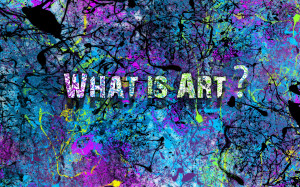Art has a profound effect on our quality of life. What is considered art? Can everything that evokes an “ooh” or “ah” response from us be considered art? Various art forms such as music, fashion, theater dance, architecture, handwriting, sculpture, photography, painting, and interior design, offer a broad spectrum of thought and competing perspectives on beauty and artistic expression. You may not consider it art, but it can still evoke feelings of astonishment and admiration.
Baumgarten who coined the term aesthetics, claimed that humans experience the world in two fundamentally ways—logically and aesthetically. Logically—that is a thorn, it will hurt if it pricks me; aesthetically—enjoying a sunset, looking at seashells, enjoying a work of art. These things are beautiful because you are looking at them aesthetically. Aesthetics is closely related to the concept of aesthetic experience.

Definitely a Million Dollar Question!
These human ways of interpreting the world have not always existed since the dawn of human society. Our way of viewing art from an aesthetic point of view is only one way of looking at things. It appears at a certain point in the history of certain cultures and may just was easily disappear and be replaced by another way of viewing things. Da Vinci’s Monalisa doesn’t have eyebrows according to fashion of those times! Whether art merely reflects the existing politics of the status-quo or whether art can create new ways of looking at things that may challenge the status-quo. Does art have its own voice, can it generate its own point of view, or is it merely the expression, symptom, reflex of a larger political system?
There are, of course, no single “right” answers to these questions. It is when searching for the most logical, relevant and reasonable explanations and conclusions that one expands his or her understanding of and appreciation for the nature and values of art.

Share Your Views